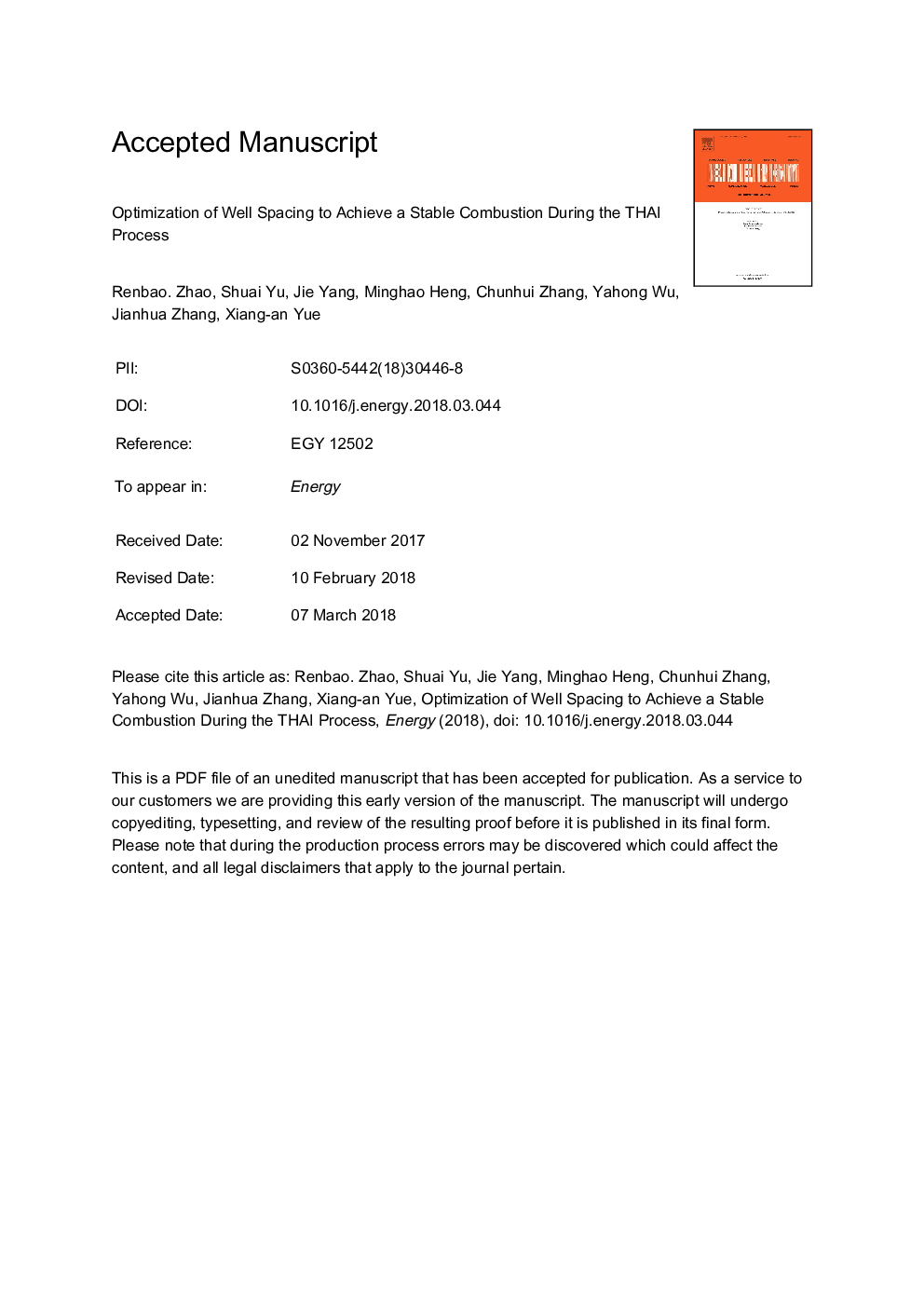| Article ID | Journal | Published Year | Pages | File Type |
|---|---|---|---|---|
| 8071765 | Energy | 2018 | 36 Pages |
Abstract
Toe-to-Heel Air Injection (THAI) is a great potential in improving energy efficiency for heavy oil/bitumen recovery. A 3D cylindrical combustion model with large size is used to carry out several experiments using Xinjiang (China) crude oil. The evolution of the fire chamber, temperature variation rate, and mass of burned carbon were analyzed using temperature measurements and flue gas composition analysis. Coke zone was quantified in the variation of zone thickness and distribution characteristics. The results reveal that there is a prevailing stable propagation of the combustion front during the first one third of the process for varying injector to producer spacing. Oxygen breakthrough is more susceptible for smaller separations and the combustion zone is reduced in length. Larger combustion fronts with greater relative propagation in the horizontal direction occurs when the well spacing is larger. The distribution of coke is significantly influenced by the injector/producer spacing. For a THAI pattern with greater injector/producer spacing, a smaller inclination angle of the coke zone occurs and the likelihood of oxygen breakthrough to the horizontal production well is lessened. Hence, the injector to producer spacing needs to be considered in designing a safe THAI process for potentially larger efficiency and optimum economics.
Related Topics
Physical Sciences and Engineering
Energy
Energy (General)
Authors
Renbao Zhao, Shuai Yu, Jie Yang, Minghao Heng, Chunhui Zhang, Yahong Wu, Jianhua Zhang, Xiang-an Yue,
